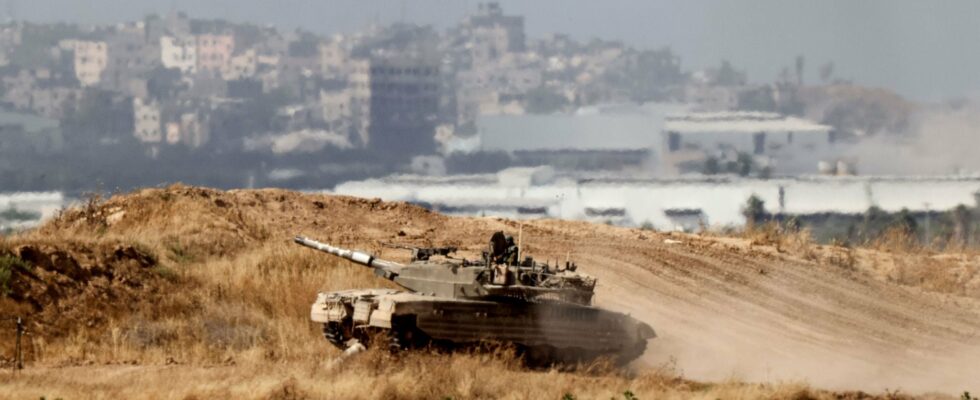So where is Yahya Sinouar, the all-powerful leader of Hamas in the Gaza Strip? Against all expectations, he would not be hidden in Rafah, near the Egyptian border, under the protection of the strongest troops of the terrorist group which carried out the deadly attack of October 7. According to American and Israeli intelligence, he has not moved from his bastion, the maze of tunnels – partly intact – under the field of ruins that has become the city of Khan Younes, a little further to the north.
Nearly seven months after the start of the ground offensive on the Gazan enclave, on October 27, 2023, Israeli forces have still not managed to incapacitate the man whom their leaders described as “a dead man who walk”. Worse: its troops regain control of territories that the Israeli army claimed to have “cleansed” of all combatants before withdrawing. “We have seen Hamas return to the areas that Israel liberated in the North, and even to Khan Younes,” said US Secretary of State Antony Blinken.
Despite its undeniable superiority, the Israeli army does not have control of the Gazan terrain and finds itself carrying out raids in areas that it had evacuated a few weeks ago, considering that they were pacified. Her soldiers were sent to fight once again near the Jabaliya camp, where she explains that “Hamas is trying to rebuild its military capabilities.” In Zeitoun, west of Gaza City, we are even in the third assault.
“In fact, the Israelis continue to apply in Gaza, as they have for twenty years, their so-called ‘lawnmower’ strategy: they enter a territory by destroying as much as possible the adversary there, before withdraw, to avoid getting bogged down, as before in southern Lebanon, explains the former colonel of the marine troops Michel Goya, author of The Conflict, Understanding the stakes of the Israel-Hamas war (Editions Perrin and Robert Laffont). The disadvantage of this method is that if you don’t control the terrain, the enemy quickly reoccupies it, and you have to go over the mower again…”
“We are clearly at an impasse”
Could raids be organized again on Khan Younès, where Yahya Sinouar is believed to be? After several months of hesitation, the IDF finally launched an operation on May 6 in the eastern part of Rafah, in the southern part of Gaza. The city serves as a refuge for a million Gazans who fled the fighting in the north and Khan Younes, but it is also a Hamas stronghold: four battalions of the Palestinian group are still there, a major objective for the Israeli authorities. determined to destroy the military capabilities of the Islamist movement.
Nearly 450,000 people have already fled the bombings of recent days. It is not certain, however, that the IDF will repeat in Rafah the large-scale operation already carried out in Gaza City in the fall, then in Khan Younes at the start of the year – the offensive does not concern moment as the eastern approaches to Rafah. While more than 35,000 people, the majority of them civilians, have been killed in the Gaza Strip since October 7, according to Hamas, Washington has warned the Israeli authorities against any maneuver likely to worsen an already humanitarian situation. catastrophic. Such a plan “risks causing enormous damage to the civilian population without resolving the problem,” warned Antony Blinken. Added to this reason is the growing unpopularity in the United States of Israeli action, which is causing significant dissension within the Democratic Party.
Beyond American warnings, the military operation is hampered by the absence of political outlets to support it. “We are clearly at an impasse,” notes David Khalfa, co-director of the North Africa and Middle East Observatory of the Jean-Jaurès Foundation. “We need a political translation of the tactical successes of the Israeli army, but in the absence of a political strategy, these diminish.” The general staff now complains openly in the press, explaining that the political power is incapable of capitalizing on the army’s victories.
The Prime Minister, Benjamin Netanyahu, has not yet defined any direction regarding the political future of the enclave. “There are currently only two alternatives to Hamas civilian rule: an Israeli military government or a return of the Palestinian Authority led by Mahmoud Abbas, with the active assistance of an Arab police force, financed by who maintain relations with Israel, says columnist Ron Ben-Yishai in the columns of Yediot Aharonot, the country’s leading daily newspaper. But Netanyahu and his government are not prepared to endorse either, and the result is that Hamas is coming back to the surface.”
Determined to retain power at all costs, Netanyahu finds himself caught between his far-right partners, who are ready to expel the populations of Gaza to reestablish colonies there, and his centrist allies, who want priority to go to the 128 hostages (36 are believed to have died, according to the IDF) and a ceasefire allowing their release.
The current impasse is reflected in growing pessimism among the Israeli population. The percentage of Israeli Jews who are very optimistic about the future of the State of Israel increased from 48% in March to 37% recently. according to the Jewish People Policy Institute. And trust in military leaders fell from 75% to 59%. “The families of the reservists are beginning to express their dissatisfaction, what is the point of sending theirs if we have to constantly take back the territories previously cleared, argues David Khalfa. There is growing skepticism about the announced war goals, while the “The impasse is obvious to Israelis, including those on the right, which is something new.”
.
